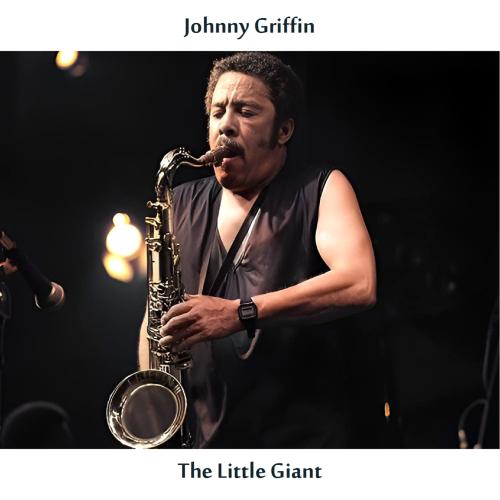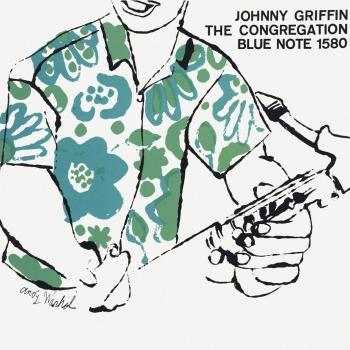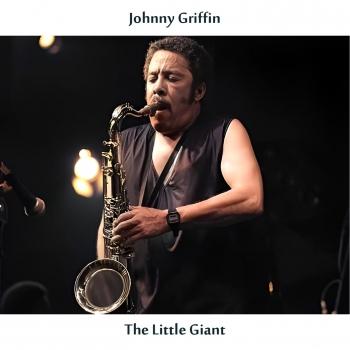
The Little Giant (Remastered Edition) Johnny Griffin
Album info
Album-Release:
1959
HRA-Release:
02.09.2024
Album including Album cover
I`m sorry!
Dear HIGHRESAUDIO Visitor,
due to territorial constraints and also different releases dates in each country you currently can`t purchase this album. We are updating our release dates twice a week. So, please feel free to check from time-to-time, if the album is available for your country.
We suggest, that you bookmark the album and use our Short List function.
Thank you for your understanding and patience.
Yours sincerely, HIGHRESAUDIO
- 1 Olive Refractions 04:17
- 2 The Message 07:23
- 3 Lonely One 04:08
- 4 63rd Street Theme 07:32
- 5 Playmates 04:18
- 6 Venus and the Moon 06:29
Info for The Little Giant (Remastered Edition)
The Little Giant is an album by jazz saxophonist Johnny Griffin and his all-star sextet, released on the Riverside label in 1959. It was Griffin's third album on Riverside.
One of Johnny Griffin's hard blowing albums as a leader for Jazzland – recorded with a crack lineup that includes Blue Mitchell on trumpet, Julian Priester on trombone, Wynton Kelly on piano, Sam Jones on bass, and Albert Heath on drums! This is the kind of work that the term "hard bop" was coined for – sharp-edged jazz at its best – informed strongly by earlier bop and modern modes, but also played with a deeper dose of soul overall. The six players come together perfectly throughout – working with a tightness that matches most Blue Note work of the time – and titles are a great set of tracks that includes 3 by Chicago pianist Norman Simmons, and 1 by the great Babs Gonzales. Tunes include "Olive Refractions", "The Message", "Lonely One", "Playmates", and "63rd Street Theme".
"A bit of an offbeat session for tenor saxophonist Johnny Griffin, The Little Giant features three originals by then-obscure pianist Norman Simmons, a reworking of the pop tune "Playmates," Babs Gonzalez's "Lonely One," and the tenorist's "63rd Street Theme." Simmons' arrangements for the three horns (which include trumpeter Blue Mitchell and trombonist Julian Priester) are colorful; the rhythm section (pianist Wynton Kelly, bassist Sam Jones, and drummer Albert "Tootie" Heath) is state of the art for the period, and Griffin (who is featured in a trio with Jones and Heath on "Lonely One") is in fine form. An interesting set of obscure straight-ahead jazz." (Scott Yanow, AMG)
Little Johnny Griffin (1928-2008) was a first-class blower, a tenorman who believed in the inspiration of the moment and reacting to circumstances, as is self-evident on the two albums included in this set. Little Giant is one of those rare items that elicit a visceral response from the listener. Direct and virile, Griffin never allows his supreme command of the instrument to obscure the emotional burden of his playing; he simply compells attention no matter the musical context. Here its provided by Norman Simmons, who composed three pieces and scored them for the three horns, and a quality rhythm section led by pianist Wynton Kelly.
Johnny Griffin, tenor saxophone
Blue Mitchell, trumpet
Julian Priester, trombone
Wynton Kelly, piano
Sam Jones, bass
Albert "Tootie" Heath, drums
Recorded August 4 & 5, 1959 at Reeves Sound Studio, NYC
Produced by Orrin Keepnews
Digitally remastered
Johnny Griffin
One of the all-time great tenor saxophonists, Johnny Griffin will go down in the annals of jazz as a performer easily able to negotiate the tricky harmonic changes and swift tempos of modern music. He’ll also be remembered as a player who could masterfully interpret tender ballads, rivaling Ben Webster in that regard.
Born John Arnold Griffin III in Chicago, Illinois, on April 24, 1928, he resided on the South Side of the Second City with his mother, who was a singer, and father, who played cornet. An adolescent Griffin heard Gene Ammons play in the big band of King Kolax. Two years later he picked up an alto saxophone, and soon thereafter was working with bluesman T-Bone Walker. A student at DuSable High School, he was tutored by the legendary band director Captain Walter Dyett. Upon graduation, he toured with Lionel Hampton’s big band, switched to the tenor sax, and moved to New York City. The late ’40s saw Griffin honking his share of R&B with Joe Morris up to 1950, alongside the band of Jo Jones in 1950, and with Arnett Cobb in 1951. He enlisted in the armed services stationed in Hawaii, and played in an Army band.
After his military commitment, he returned to Chicago and was in the company of Thelonious Monk’s various ensembles up to the mid-’60s. Griffin cut his Blue Note album Introducing Johnny Griffin in 1958, and that year formed a sextet with Detroiters Pepper Adams and Donald Byrd. He collaborated with pianists Bud Powell and Elmo Hope, was enlisted by Art Blakey briefly as a member of the Jazz Messengers, energized his solo recording career for the Riverside label, and obtained his nickname, The Little Giant, with that eponymously titled LP in 1959. His most famous and popular teaming was with fellow saxophonist Eddie “Lockjaw” Davis. Griffin also recorded the legendary A Blowin’ Session for the Blue Note label with John Coltrane and Hank Mobley.
But Griffin grew weary of the U.S. and its apathy regarding jazz, so he became an expatriate. He was living in Paris, France, by 1963, and did many albums with European rhythm sections for the Storyville, Black Lion, and Steeplechase labels. He was also a charter member and chief soloist for many years in the Kenny Clarke-Francy Boland Big Band alongside American and Continental standouts. The year 1975 was an important one for Griffin, who was featured with the bands of Dizzy Gillespie and Count Basie as documented in recordings of their sets at the Montreux Jazz Festival. He also collaborated with German saxophonist Klaus Doldinger and his fusion band Passport. In the late ’70s, Griffin returned to the States to record for the Galaxy label, and toured with fellow expatriate tenor saxophonist Dexter Gordon.
He left Paris for the countryside of the Netherlands to live on a farm, then headed to the Côte d’Azur in 1980, and in 1984 to rural Availles-Limouzine. In 1986 he was a member of the Paris Reunion Band with Woody Shaw, Dizzy Reece, Slide Hampton, and Kenny Drew, making one album for the Sonet label. During his time in France, Griffin recorded for the Antilles and Verve labels, including The Cat in 1991 and Chicago, New York, Paris in 1994. On the weeks of his birthday, Griffin made regular appearances at the Jazz Showcase back home in Chicago. In his later years he collaborated with pianist Martial Solal and saxophonist Steve Grossman. Griffin passed away at age 80 on July 25, 2008, at his home in Availles-Limouzine. (Michael G. Nastos, AMG)
This album contains no booklet.











